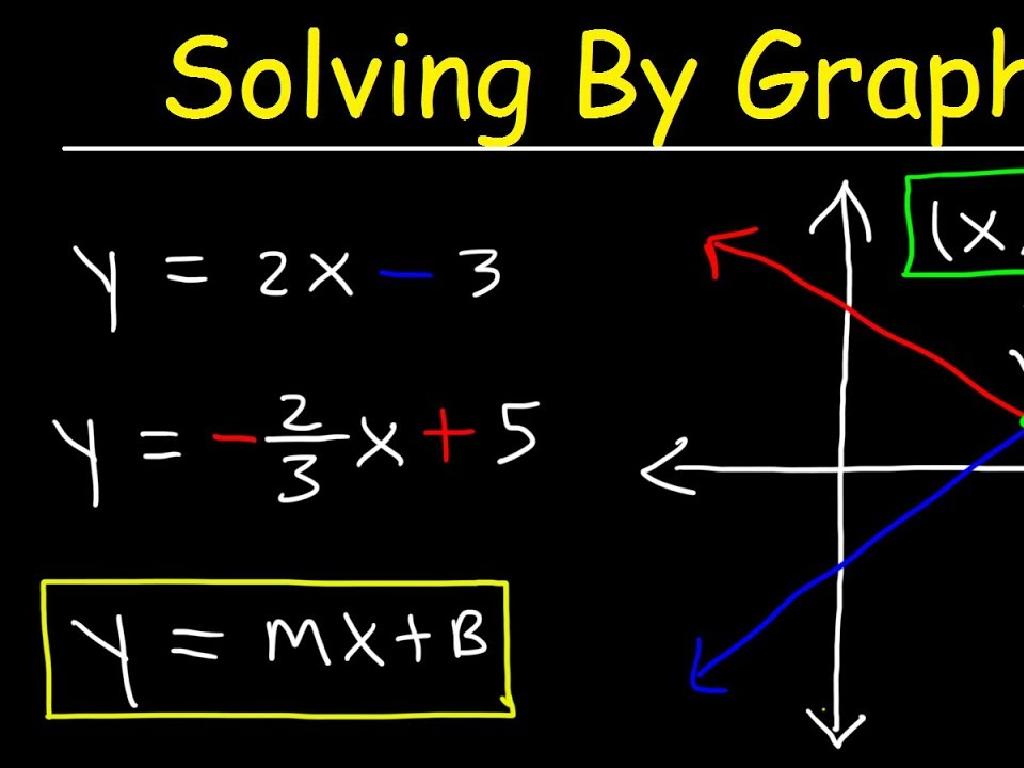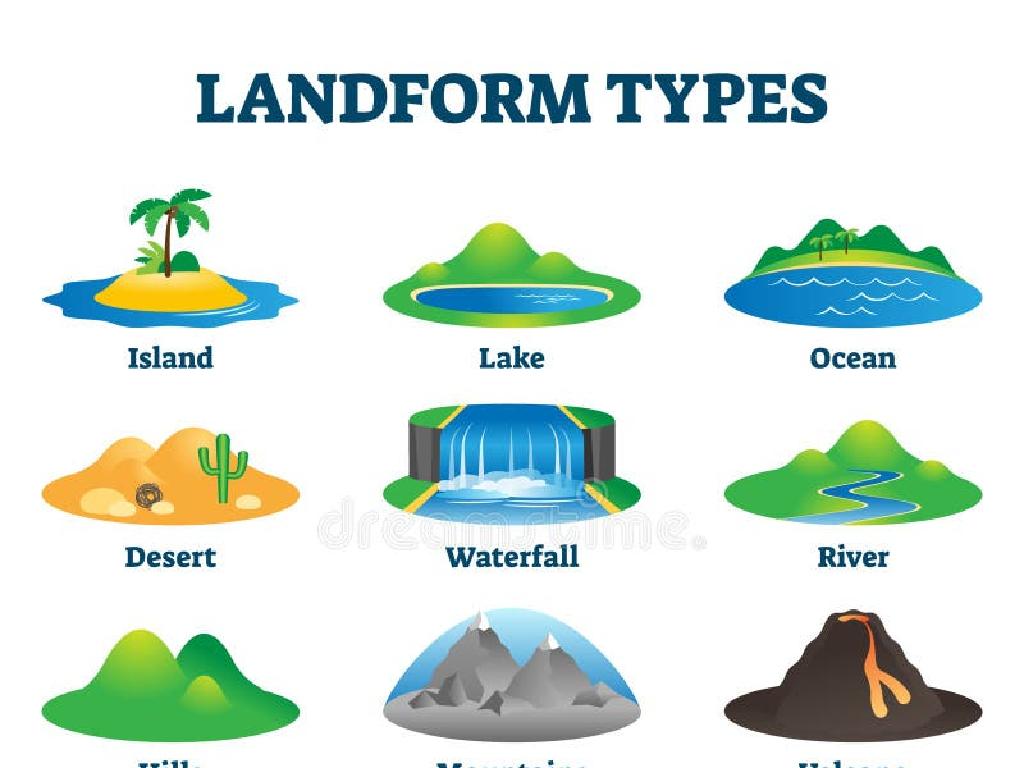Use Strip Diagrams To Represent And Solve Multi-Step Word Problems
Subject: Math
Grade: Fourth grade
Topic: Multi-Step Word Problems
Please LOG IN to download the presentation. Access is available to registered users only.
View More Content
Multi-Step Word Problems with Strip Diagrams
– What are multi-step problems?
– Problems that require more than one step to solve.
– Real-life importance of these problems
– Helps solve complex real-world situations.
– Today’s focus: Strip diagrams
– A visual tool to break down and solve each part of a problem.
– Practice with examples
– We’ll work through problems together using strip diagrams.
|
This slide introduces students to the concept of multi-step word problems, emphasizing their relevance in everyday life. It sets the stage for learning how to use strip diagrams as a method to visualize and solve these problems. The goal is to help students understand that some questions can’t be answered in one step and that strip diagrams can be a powerful tool to organize information and determine the sequence of operations needed to find a solution. During the lesson, provide examples of multi-step problems and guide students through the process of representing them with strip diagrams. Encourage students to think of situations in their lives where they might need to solve problems in steps, like planning a party or saving up for a toy.
Understanding Multi-Step Word Problems
– Define multi-step word problems
– Problems that require more than one step to solve.
– Single-step vs. multi-step
– Single-step: one operation; Multi-step: several operations.
– Key words to identify multi-step
– Words like ‘total’, ‘left’, ‘more than’, indicate multiple steps.
– Practice with examples
|
This slide introduces students to multi-step word problems, which are more complex than single-step problems as they require performing several mathematical operations to find a solution. Start by defining multi-step word problems and contrasting them with single-step problems to highlight the difference. Discuss key words and phrases that often signal a multi-step problem, such as ‘in total’, ‘left over’, or ‘more than’. Provide examples of both single-step and multi-step problems and work through them with the class to demonstrate the process of identifying and solving multi-step word problems. Encourage students to look for these key words in problems and to break down the problem into smaller, manageable steps.
Introduction to Strip Diagrams
– What is a strip diagram?
– A visual tool to represent information in a word problem
– Benefits of using strip diagrams
– Helps break down complex problems into manageable parts
– Example: Simple strip diagram
– E.g., dividing a bar into sections to show parts of a whole
|
This slide introduces strip diagrams as a method for visualizing and solving multi-step word problems. Explain that a strip diagram is a simple bar model used to represent relationships between numbers and variables in a problem. Emphasize how strip diagrams can turn abstract problems into tangible visual representations, making it easier for students to understand and solve them. Show a basic example, such as using a strip diagram to represent the total number of apples shared among friends. This will set the foundation for students to apply strip diagrams to more complex multi-step word problems in future lessons.
Creating Strip Diagrams for Word Problems
– Identify problem parts
– Break down the question into smaller pieces
– Sequence the operations
– Decide the order to add, subtract, multiply, or divide
– Draw the strip diagram
– Use bars to represent each part of the problem
– Solve using the diagram
– Apply the operations to find the answer
|
This slide is aimed at teaching students how to use strip diagrams to solve multi-step word problems. Start by breaking down the word problem into smaller, manageable parts. Next, determine the sequence of mathematical operations needed to solve the problem. Then, draw a strip diagram that visually represents these steps. Each segment of the diagram corresponds to a part of the problem. Finally, use the diagram to perform the operations in the correct order and solve the problem. Encourage students to practice with different types of problems to become comfortable with this method.
Solving Problems with Strip Diagrams
– Read the problem carefully
– Understand what the question is asking.
– Break down the problem with a diagram
– Use bars to represent different parts of the problem.
– Solve the problem step by step
– Follow the diagram to find the solution.
|
This slide is aimed at teaching students how to approach multi-step word problems using strip diagrams. Emphasize the importance of reading the problem thoroughly to understand what is being asked. Then, guide students to translate the problem into a visual strip diagram, which will break down the information into manageable parts. This visual representation helps students to see the relationship between different pieces of information. Finally, instruct them to solve the problem step by step, using the diagram as a guide. Provide examples of strip diagrams for different types of problems to illustrate the process clearly. Encourage students to practice with a variety of problems to become comfortable with this strategy.
Practice Time: Solving with Strip Diagrams
– Let’s solve a problem together
– Use strip diagrams for the solution
– Draw a strip diagram to represent the problem
– Discuss our problem-solving steps
– We’ll go over each step: understand, plan, solve, and check
– Share your solution and reasoning
– Explain how you used the diagram to find the answer
|
This slide is designed for an interactive class activity where students apply their knowledge of strip diagrams to solve a multi-step word problem. Begin by presenting a problem to the class and guide them through the process of drawing a strip diagram to represent it. Encourage students to think aloud as they work through the steps of understanding the problem, planning their approach, solving, and checking their work. After solving the problem, have a discussion about the different steps taken and the reasoning behind them. This will help students to articulate their thought process and solidify their understanding of using strip diagrams as a visual aid in problem-solving. Provide support and clarification as needed, and ensure that each student is engaged and following along with the activity.
Class Activity: Solve & Share with Strip Diagrams
– Pair up and solve a word problem
– Create your own strip diagrams
– Use bars to represent quantities and operations
– Present your solution to the class
– Discuss the process and findings
– Share your reasoning and answer questions
|
This activity is designed to foster collaborative problem-solving and to deepen students’ understanding of multi-step word problems through the use of strip diagrams. Students will pair up, ensuring that each pair has a word problem that is challenging yet appropriate for their skill level. They will then create strip diagrams to visually represent the problem, breaking it down into manageable parts. After solving the problem, each pair will present their solution and diagram to the class, explaining their thought process and how they used the diagram to help them solve the problem. Encourage other students to ask questions and engage in a discussion about the different methods used. This will help students see the variety of ways to approach a problem and understand the usefulness of strip diagrams in organizing and simplifying complex information.
Conclusion & Reflection: Strip Diagrams
– Recap on multi-step problems
– Strip diagrams as problem-solving tools
– Visual aids for understanding complex problems
– Share your interesting takeaways
– Maybe a particular problem or the concept itself?
– Discuss any challenges faced
– It’s okay to find things hard; that’s how we learn!
|
Today’s lesson focused on understanding and solving multi-step word problems using strip diagrams. These diagrams serve as a visual representation to break down complex problems into simpler parts, making it easier for students to follow and solve. Encourage students to reflect on what they’ve learned and how the diagrams have aided them. Ask them to share one aspect of the lesson they found intriguing or difficult, fostering a classroom environment where challenges are discussed openly. This reflection helps students consolidate their knowledge and builds their confidence in tackling multi-step problems.






